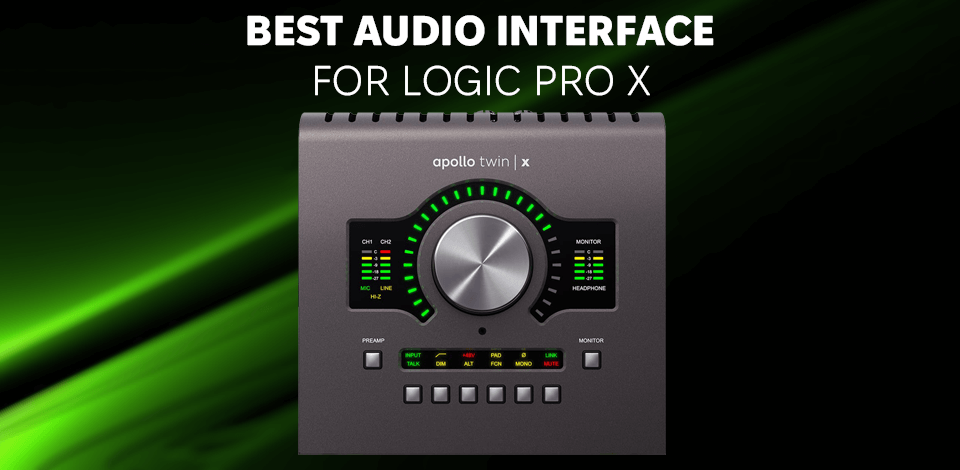
Working in Logic Pro X for many years, I know that the interface you use has a tremendous effect on your production. That’s why the audio interface is the first equipment part you should look for when starting your production venture even before purchasing a quality studio headset.
Even though the majority of interfaces offer simple integration with this DAW, some models that I used offer superior performance. The difference between them comes down to both software and hardware specifications that might puzzle an uninitiated user.

Connectivity: USB Type-C | Max Sample Rate: 192kHz | Resolution: 24-Bit
I have been using the Scarlett series for many years, and every time the products by this brand have always satisfied all my requirements. Scarlett 2i2 4th Gen is not the exception. It delivers amazing audio quality.
As the noise level is incredibly low and there is virtually no distortion, this model can even compete with higher-end audio interfaces for Ableton. For a $200 price tag, such a performance may be a pleasant surprise for musicians.
Another positive feature is that the interface does not use USB power to function. As my experience shows, this minimizes noise, which becomes especially clear when compared to setups using both an AC adapter and a laptop. I’ve tested Scarlett 2i2 in different scenarios, and it always performs better when running fueled by an internal power adapter.
Besides, each Scarlett 2i2 model I’ve owned has flawlessly functioned for a minimum of 5 years, even when being used heavily. The 4th Gen is likely to offer such a long-lasting performance, assuming it is not damaged by rough handling during shipping, as its packaging is not the most reliable one.
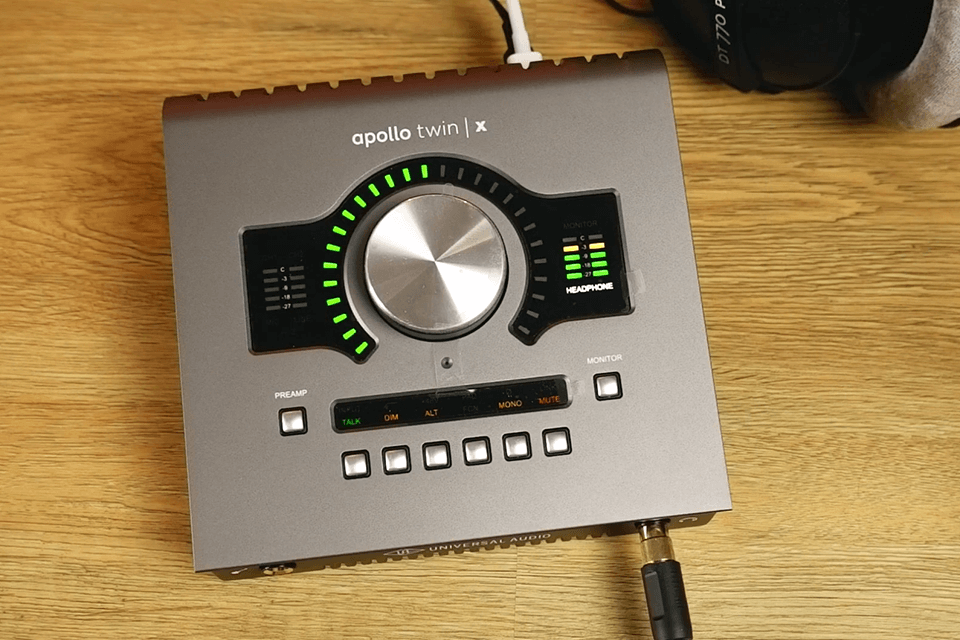
Connectivity: Thunderbolt 3 | Max Sample Rate: 192kHz | Resolution: 24-Bit
I’ve been using the UAD line for a long time, and when I got an opportunity to try out Apollo Twin X, I was particularly excited, especially because I have a motherboard with Thunderbolt 3. I had no trouble setting up this model, and thanks to Thunderbolt connectivity, integration with Logic Pro X was seamless. The sound quality was on top and I could use 2 inputs and 8 channels without experiencing noise.
It uses the Unison technology that emulates high-end preamps in real-time. With its help, it is easy to control inputs, monitors, and headphones, which was a considerable plus for me. Besides, the mix of top-notch plugins produces excellent sound quality, which cannot be compared with the sound I got from my previous setup.
This audio interface for Cubase has everything I might wish from such devices. It has exceptional quality construction, software, the premium sound. For starters, I recommend a Focusrite interface to try out their skills, but if you feel that you are qualified enough, Universal Audio Apollo Twin X is the device you should get.
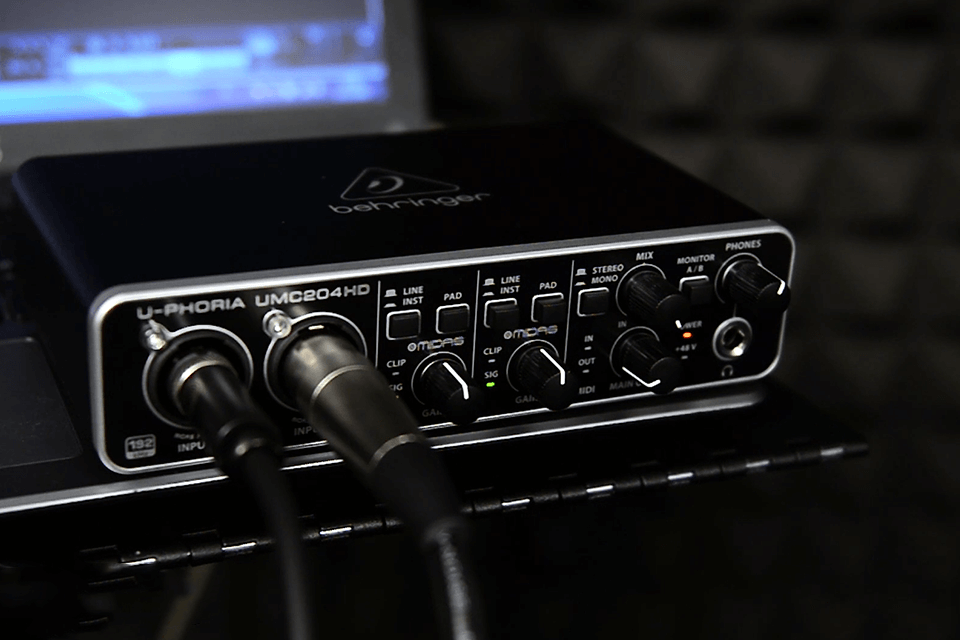
Connectivity: USB 2.0 | Max Sample Rate: 192kHz | Resolution: 24-Bit
A trouble-free setup was the first thing I liked about this audio interface for Logic Pro X. I just needed to plug it in, and the device was ready to work. Also, I want to note its perfect integration with the sound system, ease of use, and impressive build quality.
The body of UMC204HD feels incredibly solid, which is unexpected from the audio interface under 50 dollars. It has a chunky and sturdy metal chassis, and although the knobs are plastic, the spots they are attached to are incredibly smooth.
The sound quality is fantastic. The mic preamps are clean and have much gain and the conversion is clear, so you can create or capture a performance without hidden stumbling blocks. All these made me conclude that this audio interface is an ideal option even for serious recording, despite it being quite cheap.
As I use this unit primarily for virtual instruments and Logic Pro X, latency was one of my concerns. I should say that playing virtual instruments feels responsive and the latency performance was a pleasant surprise for me. Surely, I won’t find a more decent model in terms of built and sound quality with such a low price tag.
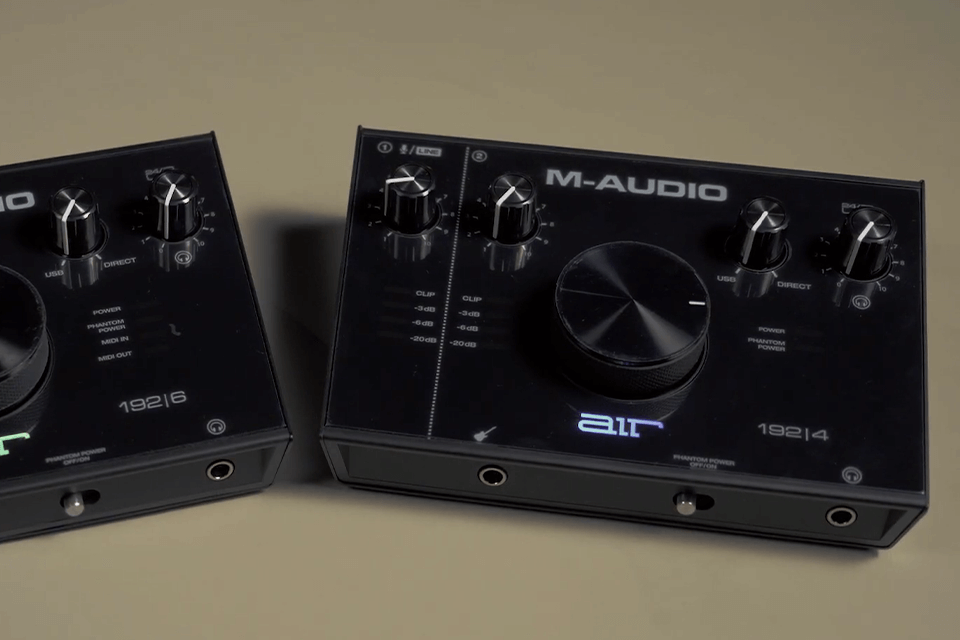
Connectivity: USB-C | Max Sample Rate: 192kHz | Resolution: 24-Bit
M-Audio AIR 192|6 has been my handy assistant for a while now, and I must admit that its functionality fully satisfies me. It is fitted with two mic preamps for recording duets and the MIDI in/out to connect to my old MIDI keyboard, virtual instruments, and drums. The noise level is extremely low, and the amount of gain is enough even for gain-demanding microphones.
The low latency is another huge plus. Besides, I appreciate its VU LED meters, which are more convenient than standard “Signal” and “Clip” indicators, as they allow me to define where my gain levels are and adjust them on the go.
Using Logic Pro X as my DAW, I’m not interested in the ‘lite’ versions of DAWs that came with this audio interface for Shure SM7B. However, aspiring musicians might benefit from them. The only drawback for me is the absence of ‘pad’ switches on the channels, which could decrease the input level for hot instruments. But this is not a disaster, as there are the gain knobs that can handle this task.

Connectivity: XLR | Max Sample Rate: 192kHz | Resolution: 24-Bit
I selected RME Babyface Pro FS as the Logic Pro X audio interface, as it was an ideal option to streamline my setup. Now, I could connect both my XLR microphone and high-end headphones to one device. Yes, the price of this model is higher, but once I started using the Babyface Pro FS, I was amazed by its functionality.
The first reason to choose this device is its seamless integration with Logic Pro X. Besides, it has low latency performance. The audio quality is impressive, and the preamps are extremely clean. Another thing that appeals to me is the onboard equalizer, which I can use for both input and output right within Logic. Such a high level of control without the need to install any extra plugins is a great advantage.
This audio interface for FL Studio also offers a lot of onboard controls, which is extremely convenient. I do not even need the software to tweak most settings, as I can easily do this directly on the device. For serious musicians who use Logic Pro X, RME Babyface Pro FS is a worthy investment.
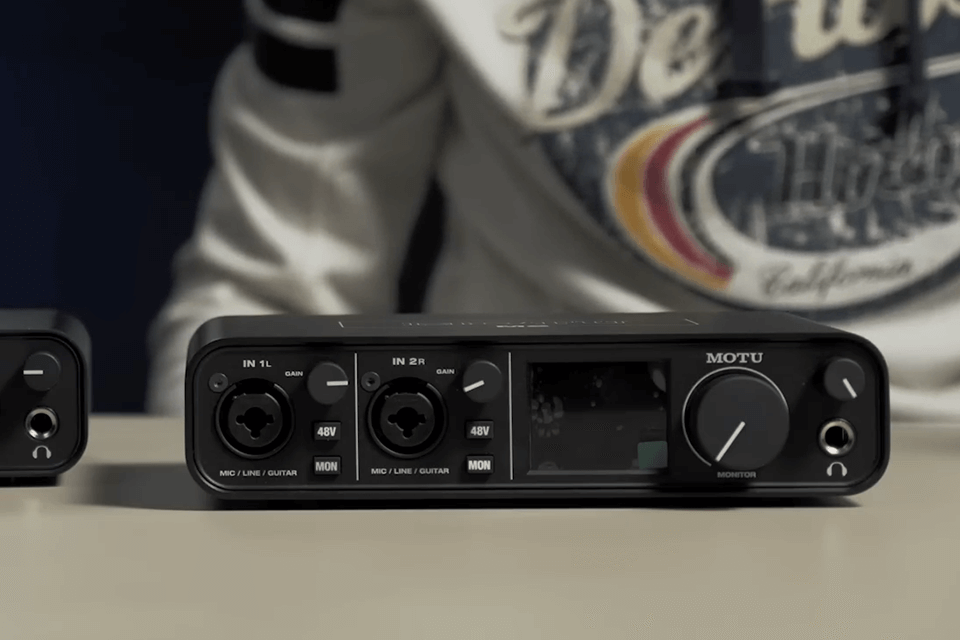
Connectivity: USB | Max Sample Rate: 192kHz | Resolution: 24-Bit
Trying out MOTU M4 for Logic Pro X was a pleasant experience for me. One of the greatest advantages was the extra gain it offers for monitoring headphones – an ability I lacked with my previous device.
A real highlight of this audio interface for Reaper was the extra line inputs on the back, which allowed hooking up anything I might require and monitoring the inputs directly with virtually no latency. I also appreciate the convenience and functionality of the setup, as it eliminates the need to install a separate mixer.
After using it for a while, I’m absolutely satisfied with the MOTU M4. Flexibility is another strength of this audio interface, and this is exactly what I need to enjoy my rhythm games and Logic Pro X sessions without any clutter. The USB-C connection is another plus, as I do not have to deal with multiple power cables.
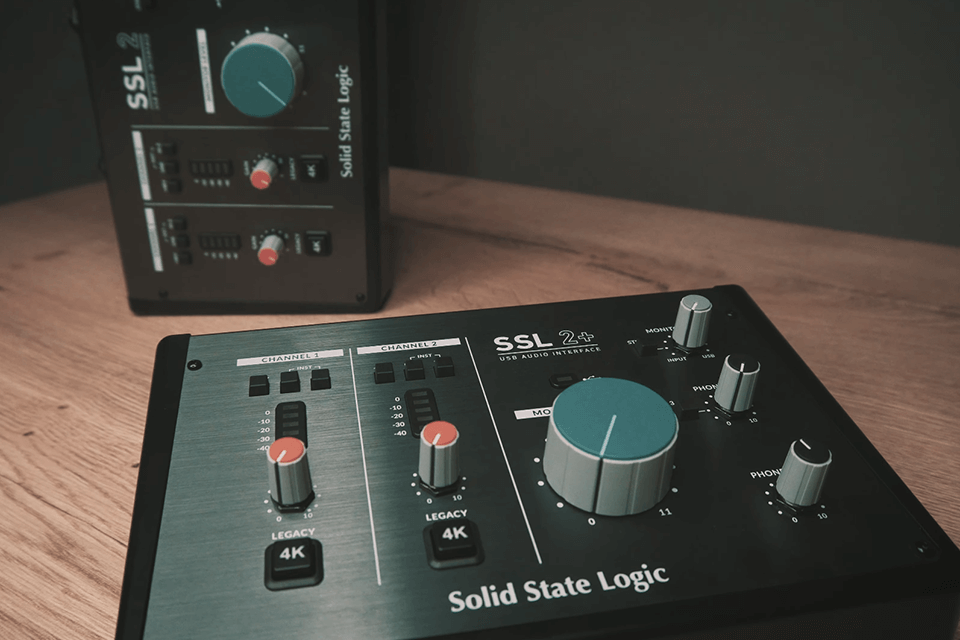
Connectivity: USB-C | Resolution: 24-bit/192kHz | Channels: 6
The SSL2+ is probably the best audio interface for Logic Pro X, as it is both compact and functional. The two XLR/1/4-inch inputs on the back allow connecting the needed peripherals, while MIDI support is a really pleasant surprise considering the low price. The quality of sound is stellar – it has a warm, analog feel that enriches the audio.
Smoothly integrating with Logic Pro X, the device pleased me with flawless performance without any hiccups. The level meters on the top allow monitoring levels, whereas the dual headphone jacks with separate controls are especially handy when I’m producing music with someone else. The monitoring quality for such an affordable cost is impressive.
Novices will likely be confused with so many inputs and options of this audio interface for Audacity, but once they master it, they will definitely appreciate the power of this tool. If you are ready to spend a bit more on audio interfaces than most models from the basic Scarlett series cost, this is a better option.
XLR inputs: If you want to record audio via a microphone, then getting an interface with an XLR input becomes a mandatory requirement.
Instrument line inputs: Such ports offer terrific impedance and are ideal for passive instrument pickups.
Balanced stereo output: This output is essential for attaching a balanced cable to your setup.
Headphone output: This port should come with enough power to ensure optimal headphone performance and sound quality.
USB: The biggest benefit of a USB port is that you’ll find hundreds of different interfaces compatible with this connection type. It’s particularly useful for organizing recording sessions on your laptop when traveling.
Firewire: This type provides superior data transfer speed and stability. It’s also handy for recording several channels simultaneously. Sadly, the number of interfaces that support this connection type is rather limited.
Thunderbolt: Such connectivity allows you to enjoy fast speeds and minimal latency, hence why it’s quickly becoming the standard choice for audio interfaces. The third version of this technology offers twice the speed of Thunderbolt 2 and is eight times faster than USB 3.0.
USB: This type is often called Retail-USB or USB+ Power, as it allows you to power the audio interface using a USB host rather than having to rely on an external power adapter.
External: Such plug-in power units resemble the ones you’d find for a laptop. They are designed for audio interfaces that lack the internal components required for receiving the power straight from the source.
Phantom Power: This type relies on an “invisible” power source, as both the power and the sound signal use a single cord to connect to the audio interface for Sonar. You can recognize such a power supply by the P48 switch on the interface, with 48 standing for 48V.
As audio interfaces employ plug-and-play functionality on Mac, there is no need to install any extra driver when using Logic Pro X.
Seamless integration of audio interface with third-party plugins and virtual instruments is one of its greatest benefits. This provides you with more creative options when using Logic Pro X.
The audio interface often provides firmware/software updates to ensure compatibility with any new feature or update in Logic Pro X.
There are components in the audio interface that ensure a wide dynamic range. The device can capture even minor details representing the audio as accurately as possible in Logic Pro X.